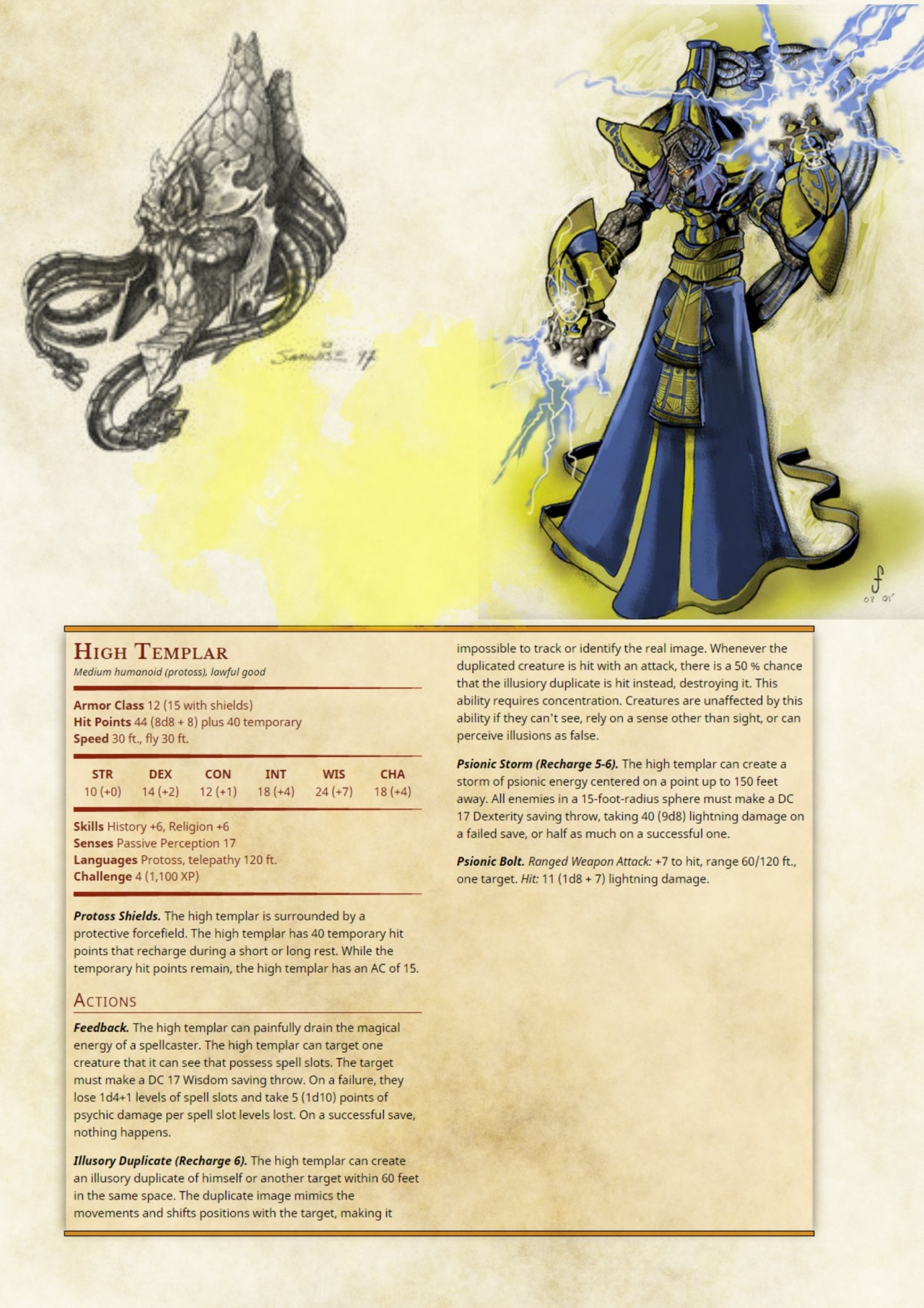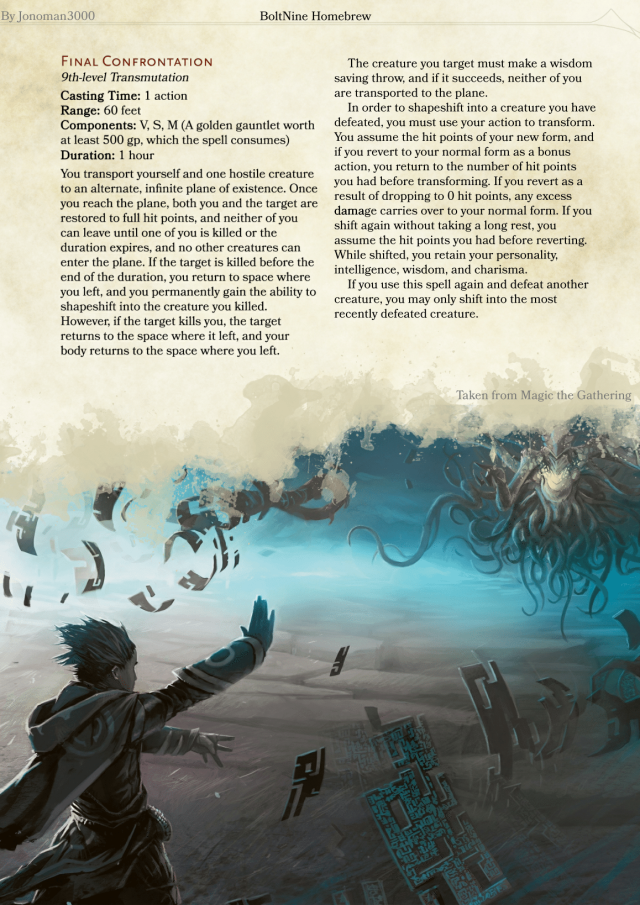

- #SQUIDMAN DND 5E HOW TO#
- #SQUIDMAN DND 5E MOD#
- #SQUIDMAN DND 5E MODS#

Add this number to your weapon’s corresponding Ability Score Modifier to calculate your Attack Modifier if you’re proficient with the weapon you’re using. Your Proficiency Bonus comes from your overall character level. Luckily, this is universal across all characters and is class, race, and weapon agnostic. The second part of determining your Attack Modifier is your Proficiency Bonus. With all this in mind, let’s move on to Proficiency Bonus.
#SQUIDMAN DND 5E MOD#
Remember: the Ability Score Modifier is what you use to calculate your Attack Mod in DnD 5e. If you have a 16 in Strength, you have a +3 Strength Modifier. If you have a 15 in Dexterity, you have a +2 Dexterity Modifier. So, the modifier breakdown looks like this (p. Basically, every even number from 1 to 20 grants an additional +1 to your Ability Score Modifier. Which sounds a lot more confusing than it is. But, that’s pretty easy too.ĭnD 5e’s Ability Scores increase their respective modifiers by 1 for every 2 points in the score. …And, how your Ability Score Modifiers breakdown. You just need to know which Ability Score your weapon uses. And, the same goes for a rapier for melee combat.Įither way, you use the same formula to calculate your Attack Modifier.
#SQUIDMAN DND 5E MODS#
And, the Thrown weapon property means you can use Strength for a ranged weapon.įor example, a thrown javelin can use either your Strength or Dexterity mods when calculating your Attack Modifier. The Finesse weapon property means you can use Dexterity for a melee weapon.
If you’re using a ranged weapon, you use your Dexterity modīut of course, there are exceptions to these rules. If you’re using a melee weapon, you use your Strength mod. There are some general "Rules of Thumb" when it comes to which Ability Score you use for your Attack Modifier. Weapons in DnD 5e use either your Strength or Dexterity modifiers when determining your Attack Mod. Honestly, it’s the same formula just repeated depending on what you’re using. Now, if you’re using different weapons, then things get a little more complicated. Jot that number down on your character sheet and call it a day. Just use the following formula:Īttack Modifier = Ability Modifier + Proficiency Bonus Luckily, it’s pretty easy to calculate your Attack Modifier too. Typically, when you roll an attack in DnD 5e, you add your Attack Modifier to hit.įor your most basic, mundane attacks, this is the number you’ll use. Let’s start with your Attack Bonus and how you calculate it. While this is a wide view of everything that goes into attacks in 5e, I want to go more granular so you can see how each of these mechanics work. Deal Damage If you score a hit, congratulations! You get to deal damage according to your weapon’s or spell’s damage dice.Īnd, that’s what you’ll do every time you make an attack roll in DnD 5e. You need to meet or exceed their AC to hit. Resolve Your Attack Once your attack roll stops, add or subtract your modifiers to it.Īfter adding your modifiers, compare your total roll (d20 roll + modifiers) against your target’s Armor Class. Roll Your Attack Now for the exciting part pick up your 20-sided die (d20) and roll. You should know everything that benefits or hinders your roll ahead of time. This includes your Attack Modifier, any potential bonuses (like if you have advantage or have an extra die from a spell), and any bonuses for your target like D&D’s Cover rules. Determine Modifiers Next, after selecting your target, determine all relevant modifiers for the attack. You need to declare you’re taking the Attack action and what your target is before you roll. This could be another creature or an element of the battlefield like scaffolding or that very flammable looking pile of straw. Choose Your Target First step when making an attack choose who or what you’re attacking.īefore doing any rolling, you need to know what you’re attacking. So, I’d probably go with an outline like this: But, I do think there could be a little more clarification in these steps. Now, I agree that these are the three most basic, stripped down steps of making an attack in DnD 5e. "Whether you’re striking with a melee weapon, firing a weapon at range, or making an attack roll as part of a spell, an attack has a simple structure: Choose a target…Determine modifiers…Resolve the attack…." of the Player’s Handbook, or here in the Combat section on DnD Beyond, outlines the most basic steps of making an attack: So, let’s get right into the basics of attack in DnD 5e. #SQUIDMAN DND 5E HOW TO#
How to Attack in DnD 5e Knowing how to attack in DnD 5e is important to keeping a smooth, appropriately paced game

Let’s get right to it with the basics of attacks rolls. So, here’s a complete guide on how to attack in DnD 5e. And, you need to know how to attack in DnD 5e for things to go smoothly. There’s a lot that goes into fighting heroic (or maybe less-than-heroic) battles. Combat is a major aspect of Dungeons & Dragons Fifth Edition.







 0 kommentar(er)
0 kommentar(er)
